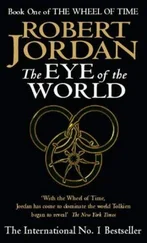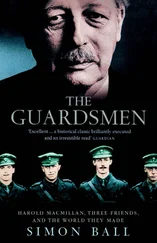Banks would not have been surprised to learn this. Though he had never been to this part of the world he knew a lot about it. He would have known that the Russians, beginning with Vitus Bering’s expedition to the North Pacific in 1741, had discovered the fur-bearing mammals in the area and, soon afterwards, began trading them to the Chinese. He would have known that Georg Steller, the expedition’s naturalist, produced the first description of the sea otter and, particularly its pelt, the gloss of which, he reported, ‘surpasses the blackest velvet’.[5] Banks would also have been familiar with Peter Simon Pallas’s published account of his travels in Russia, which provided a detailed account of the trade in furs from Russia to China at the Siberian–Chinese border trading post of Kyakhta.[6] William Coxe’s 1780 publication, Account of the Russian Discoveries Between Asia and America , the first of its kind in English, also spoke glowingly of the trade in furs, and was only the latest in the long line of publications that discussed the Pacific fur trade.[7] Banks would have concluded from all this information that there was no reason why the British could not follow the Russians into this lucrative space.
The possibilities of a British-controlled Pacific fur trade had, in fact, already been advocated by both James Matra and Banks when their proposal for settling Australia, dated 23 August 1783, was put before the government.[8] The plan, it will be recalled, proposed a community of free settlers with the addition of American Loyalists who would produce for export to Britain and re-export to Europe a number of crops suited to the climate and which could be imported for cultivation from India, the nearby Spice Islands, New Zealand and elsewhere. Because Matra and Banks were imagining a settlement that would not be an expense to Britain, but rather increase its wealth, they proposed that commerce should be opened between New South Wales and the fur-rich Pacific coast which Cook had surveyed. The conclusive element, Matra and Banks emphasised, was the fantastic return on investment that the fur trade guaranteed. ‘The skins which they procured’, Matra and Banks wrote referring to Cook’s third voyage, ‘then sold in China at 400 hard Dollars each, though for the few they brought home, of the same quality, they only received about Ten Pounds each.’ And there was more. ‘As our situation in New South Wales, would enable us to carry on this Trade with the utmost facility, we should no longer be under the necessity of sending such immense quantities of Silver for the different Articles we import from the Chinese Empire’.
The government, as seen in a previous chapter, did not take up Matra’s proposal for settling Australia with free settlers and American Loyalists, and the commercial possibilities of a Pacific fur connection were not pursued. But the idea of British ships plying a trade between Nootka Sound and China remained attractive.
It got a tremendous boost when James King’s authoritative telling of Cook’s final voyage was published on 4 June 1784. King laid it out simply and starkly in a chapter in volume three which described the journey of the Resolution and the Discovery from Macao, the Portuguese settlement at the mouth of the Pearl River in southern China, to the main port city of Canton, almost 100 kilometres further up river. The whole stock of sea otter pelts that were sold in Canton fetched just under £2000. Considering that by the time the ships got to Canton, some of the pelts had already been sold on the Kamchatka Peninsula and others had been spoiled, this figure represented an enormous profit margin.[9] King also mentioned that some of the ship’s company were so obsessed by the potential wealth they were on the point of mutiny, intending to force the ships to return to the Pacific coast of America. Indeed, as it turned out, while they were in Canton two seamen from the Resolution commandeered the ship’s cutter. A search was made but to no avail. ‘It was supposed’, King wrote, ‘that these people had been seduced by the prevailing notion of making a fortune, by returning to the fur islands.’[10]
King remarked that the British fur trade should be an extension of the East India Company’s trade in Canton and, with two ships making the return voyage to Nootka Sound from Canton annually, they could bring as many sea-otter skins as possible to this lucrative market. At the time the East India Company held a monopoly of all British trade in most of the Indian and Pacific Oceans. King added that in order to have something with which to trade at Nootka Sound, each ship would need to carry five tons of unwrought iron, ‘a forge, and an expert smith, with a journeyman and apprentice, who might be ready to forge such tools, as it should appear the Indians were most desirous of … iron is the only sure commodity for their market.’[11]
At a price of just under £5, King’s three-volume account of Cook’s last voyage was not cheap. The entire print run, however, sold out in three days and a contemporary reviewer commented that second-hand sets were changing hands for more than twice the original price.[12] No doubt much of the attraction was the account of Cook’s death but some readers must have been keen to learn about the fur bonanza that was the Pacific Northwest.
Richard Cadman Etches was just the sort of person to be intrigued by the promise of the fur trade. Born in Derbyshire, Etches came to London in 1779, the same year as Cook died, and seems to have established himself quickly in the City’s tea and wine business, going into partnership with Robert Hanning Brooks.[13] Details about his activities are at best sketchy but on 13 March 1785, Etches met with Banks to discuss his proposal: to send two ships to the Pacific Northwest to obtain furs for trade in Canton as King had recommended.
Banks thought that Etches should be more ambitious. Japan, for example, should be included as a possible market.[14] Banks had been led to think about Japan as a commercial possibility probably as early as 1774 when John Blankett, a British naval officer, wrote a report to Lord Sandwich at the Admiralty on the potential of Japan and the nearby islands as a market.[15] But what impressed Banks the most was most likely the visit to Soho Square by Carl Peter Thunberg, who had been with Francis Masson collecting plants at the Cape, and who had been at the Dutch East India Company settlement in the Bay of Nagasaki for more than a year in 1775 and 1776. Thunberg had stayed at Banks’s home in late 1778 and early 1779 on his way back to Sweden from Japan, and while he was there he had spoken to Banks about the potential of Japan as a market.[16]
Banks agreed to write to Thunberg, who by then was in Uppsala, asking him to expand on the Japanese market and, specifically, his opinion of the likelihood of British ships being allowed to trade in the ‘northern Provinces’, something which Thunberg had said was possible.[17]
Banks also suggested that Etches should think bigger in terms of how he wanted to finance the venture. Etches agreed with him and, in addition to the £20,000 subscription he had arranged to fit out the two ships, he would try to increase the nominal capital to £200,000 if the first venture were a success – which he didn’t doubt it would be.[18]
Not long after the meeting with Banks, Etches floated his new business, which he appropriately called ‘The King George’s Sound Company’. It had nine partners: Richard Cadman Etches, his brother John, a number of other merchants, and two naval officers from Cook’s third voyage, George Dixon, who served as an armourer on HMS Resolution , and Nathaniel Portlock, who was appointed on HMS Discovery as master’s mate and then transferred to HMS Resolution following Cook’s death.
Читать дальше












